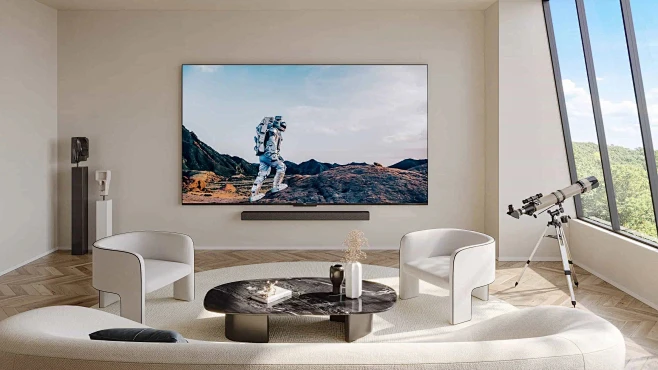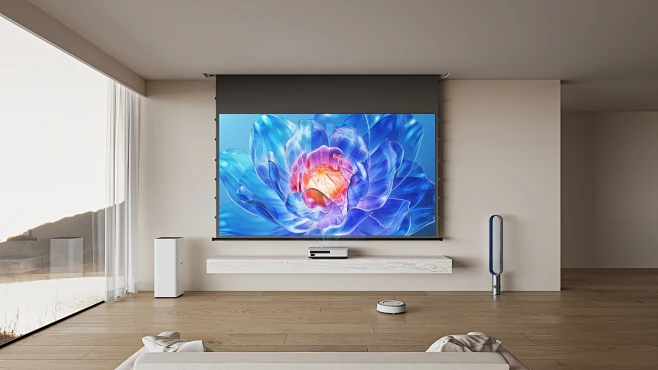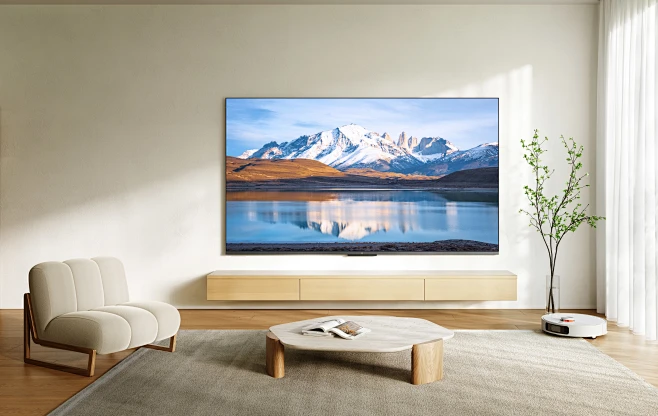

Many people struggle with choosing a projection screen for home theaters or exhibitions—they don’t want to overspend, but also fear cheap screens will ruin the viewing experience. Let’s break down how to pick the right screen for different scenarios in 2025, and we’ll also talk about custom screen options. Even beginners can follow along!
1. Home Theater Screens: Choose Based on “Light + Budget”
For home use, start with your room’s lighting and budget—these two factors set the direction. Here’s a practical 2025 selection table:
| Home Theater Scenario | Recommended Screen Type | Key Advantages | 2025 Reference Price (100-inch) |
|---|---|---|---|
| Bright room, small space | Textured Plastic Screen | Low cost, easy installation, no worry about wear | $15-$45 |
| Dim room, medium budget | Glass-Coated Screen | Strong light reflection, bright image, high value | $28-$75 |
| Wide viewing angle needed, gain-sensitive | Drawing Paper Screen | No polar diffusion, uniform brightness from all angles | $20-$55 |
Let’s explain the “gain value” of drawing paper screens—many people find this term confusing, but it simply refers to the screen’s ability to reflect light. Theoretically, its gain (GS) is 1, but in practice, it’s around 0.9. This is great for those who don’t want uneven brightness in the image. If you can’t control the light in your room, first block outdoor light and adjust indoor lamps—this will make any screen look clearer.


2. 3 Common Screen Questions, Updated for 2025
1. On a tight budget: Projecting on a white wall vs. buying a cheap screen—which is better?
Honestly, if you don’t have high demands for home movie nights, a white wall works in a pinch. But don’t expect great quality—walls have uneven reflection, easy stains, and the image will look grainy. However, for business presentations, exhibitions, or school teaching, clean white walls aren’t always available. That’s where cheap plastic screens shine: an 80-inch model costs just $10-$25 in 2025, and it’s portable. Many small exhibitions use these now.
2. Will a living room projection screen ruin the decor when retracted?
“Hidden installation” is popular in 2025! Embed the screen in the ceiling—lower it when using, retract it when not. The wall stays neat. But remember to decorate the background wall (e.g., wood veneer or a painting) — otherwise, the wall will look empty when the screen is retracted.
3. Is a bigger screen always better? How to find the right size for your home?
Many people think “bigger is better,” and that’s true—but it depends on your space! A simple 2025 rule: Viewing distance ≈ Screen diagonal length. For example, a 100-inch screen (≈2.54m diagonal) works best with a viewing distance of 2.5-3.0m, and the room should be at least 15㎡. If you don’t understand formulas like “Viewing distance = 1/2tgα/2,” just follow this rule—it never fails. Here’s a reference for popular sizes:
| Screen Size (Inch) | Diagonal (Meter) | Recommended Viewing Distance (Meter) | Suitable Room Area (㎡) |
|---|---|---|---|
| 80 | 2.03 | 2.0-2.5 | 12-18 |
| 100 | 2.54 | 2.5-3.0 | 15-25 |
| 120 | 3.05 | 3.0-3.8 | 20-35 |
3. Beyond Home Use: These Scenarios Need Custom Screens
Projection screens aren’t just for homes anymore—in 2025, city history museums love sheepskin-toned screens paired with sand tables to show history, creating a sense of depth. There’s also sky projection: multiple 4K projectors stitch images together, and the screen is installed on the ceiling. With Dolby Atmos, it feels like you’re inside the scene. Note that while LED screens can work as display carriers, their installation cost is still high in 2025, and they have strict environmental requirements—custom projection screens are more flexible.
Finally, a reminder: The screen is the “last link” for projection images to reach your eyes. If you spend a lot on a 4K projector but pair it with a low-quality screen, the image will be blurry. If standard sizes/types don’t meet your needs (e.g., irregular sky screens or large business screens), we offer custom solutions—whether it’s a living room embedded screen or a portable exhibition screen, we can design it to your space and needs.


